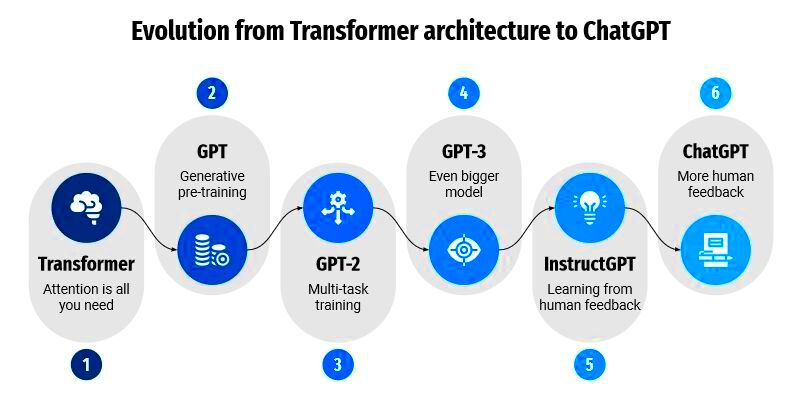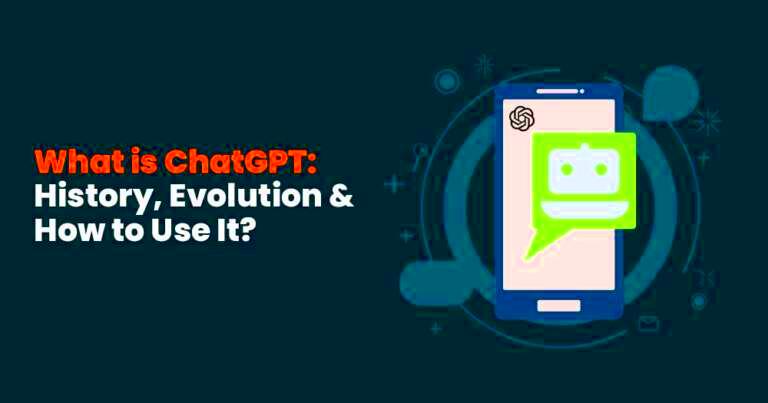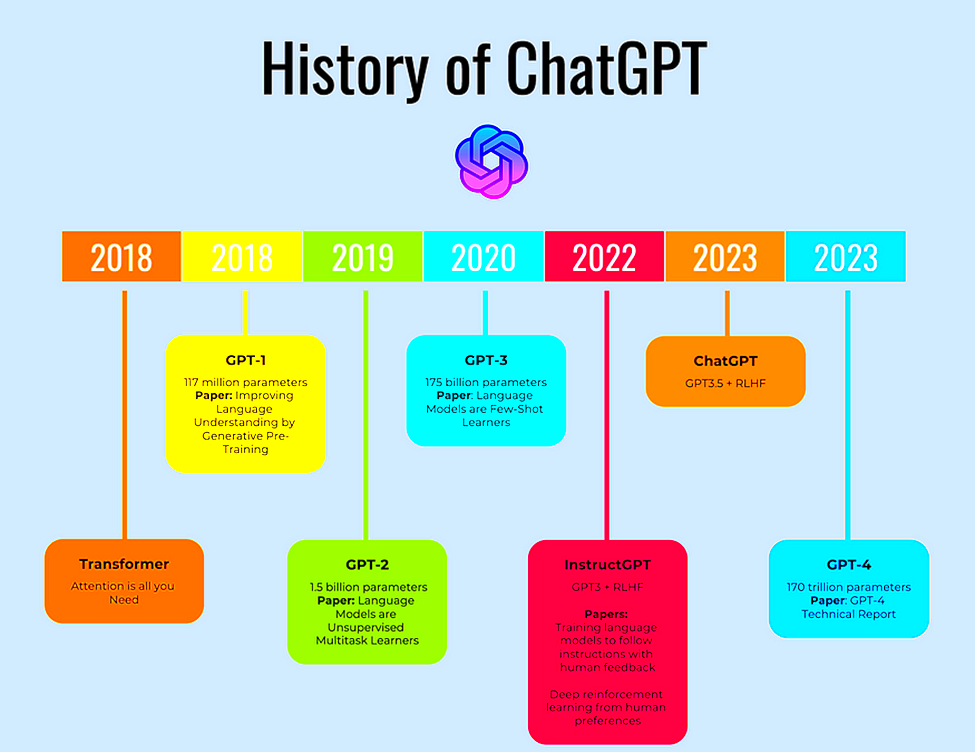Have you ever had a conversation with an assistant that made you feel like you were chatting with a real person? That’s the beauty of the ChatGPT API. In essence it’s a tool that enables developers to incorporate OpenAI's conversational AI into their apps. Think of it as a link, between human curiosity and cutting edge technology.This API is capable of tasks ranging from answering questions to producing content all driven by a sophisticated model trained on extensive data sets. Personally I've found that using ChatGPT often resembles engaging in a conversation with a well informed friend who’s always there to lend a hand.
How ChatGPT API Came into Existence

The evolution of the ChatGPT API is an interesting one. It began with OpenAIs goal to create AI that is both safe and helpful for all. The early versions such as GPT 1 and GPT 2 set the stage by demonstrating the capabilities of models. However it was GPT 3 that really made waves. With an impressive 175 billion parameters this model was able to produce text that flowed smoothly and made sense.The launch of the ChatGPT API by OpenAI was a pivotal moment for developers. With this tool they could seamlessly incorporate the AI into their applications without delving into the complexities of its technology. I recall witnessing the debut of this API; it felt like witnessing a fresh chapter unfold in the realm of intelligence. It unlocked a world of opportunities ranging from building chatbots to tailoring user experiences.
Key Milestones in ChatGPT API Development

The progress of the ChatGPT API has been defined by significant milestones that have influenced its growth. Take a moment to explore some of the notable moments along its path.
- Launch of GPT-3: The introduction of GPT-3 was a significant leap forward. With its enhanced language capabilities, it set new standards for what conversational AI could achieve.
- API Release: OpenAI’s release of the ChatGPT API allowed developers to tap into this advanced technology. It was a moment of excitement, as it made sophisticated AI accessible to a broader audience.
- Fine-Tuning Capabilities: The ability to fine-tune the model for specific tasks was another milestone. This feature meant that businesses could tailor the AI’s responses to better fit their needs.
- Integration of Safety Features: As the API evolved, so did its safety measures. OpenAI continuously worked on improving the model’s ability to handle sensitive topics responsibly.
Looking back at these achievements its evident that the ChatGPT API has evolved significantly. With every progress made its abilities have been improved and its possible uses have broadened. Personally I see these developments as akin to observing a talented artist meticulously perfecting their work of art.
Current Capabilities and Features of ChatGPT API
Have you ever been amazed by the human like quality of conversational AI? The present day ChatGPT API showcases the progress we’ve made in this field. Essentially it aims to comprehend and produce text that resembles human communication, based on the prompts it gets. However its potential goes well beyond casual banter.Here’s what makes the ChatGPT API stand out:
- Contextual Understanding: The API can remember the context of a conversation, making interactions feel more natural and coherent. It’s like talking to a friend who remembers your last conversation.
- Versatile Responses: Whether you need technical explanations, creative writing, or casual conversation, ChatGPT can handle it all. It adapts its tone and style based on the prompt you provide.
- Multi-turn Conversations: Unlike simpler models, ChatGPT can manage multi-turn conversations, which means it can keep track of the flow and context over several exchanges.
- Fine-tuning Capabilities: Developers can customize the API’s behavior to better fit specific needs, enhancing its relevance for different applications.
From my perspective trying out these functionalities has been quite enlightening. I’ve discovered that customizing replies and keeping track of context is particularly valuable when it comes to fostering interactions that are both captivating and tailored to individual preferences.
Applications of ChatGPT API in Different Sectors
Picture a game changing that revolutionizes the way companies engage with their clients or how educational material is presented. The ChatGPT API is causing a stir in different industries and here’s how it works.
- Customer Support: Many companies use ChatGPT-powered chatbots to handle customer inquiries, providing instant responses and freeing up human agents for more complex tasks.
- Content Creation: Writers and marketers leverage the API to generate blog posts, social media content, and even creative writing, making content creation faster and more efficient.
- Education: Educational platforms use ChatGPT to create interactive learning experiences, from tutoring students to answering their questions in real-time.
- Healthcare: In healthcare, the API helps in providing general information, answering patient queries, and even offering mental health support through chat-based interactions.
Seeing these uses of ChatGPT in action is truly inspiring. It goes beyond being a mere technological gimmick and proves to be a genuinely transformative asset in various industries. Each application offers its own distinct advantage simplifying and streamlining everyday activities in a way.
How to Get Started with ChatGPT API
If you’re eager to incorporate ChatGPT into your project but feeling a bit lost on how to kick things off, fret not. Starting with the ChatGPT API is quite simple. Here’s a guide to walk you through the process step by step.
- Sign Up: First, you need to sign up on the OpenAI platform and get access to the API. Visit OpenAI’s website and follow the registration process.
- Get API Keys: Once you’ve signed up, you’ll receive API keys that you’ll use to authenticate your requests. Keep these keys secure as they allow access to the API.
- Review Documentation: OpenAI provides comprehensive documentation on how to use the API. Spend some time understanding the endpoints, parameters, and examples provided.
- Integrate and Test: Begin integrating the API into your application. Start with simple test cases to ensure that everything works as expected. Gradually build out more complex functionalities.
- Monitor and Adjust: After integration, monitor the API’s performance and make adjustments as needed. Fine-tune the model or tweak the settings based on user feedback and requirements.
When I began working with the ChatGPT API I was really impressed by how useful the documentation was. It was like having a neatly arranged roadmap before embarking on a journey. If you take some time to explore and try things out youll quickly discover how to tap into the potential of ChatGPT to suit your requirements.
Common Challenges and Solutions with ChatGPT API
Using the ChatGPT API can be an exciting experience, but it does come with its share of challenges. Having experimented with it personally I’ve run into a few obstacles that many people encounter. Being aware of these common difficulties can assist you in navigating them more seamlessly.Here are common problems and how to solve them:
- Context Management: One of the tricky parts of using ChatGPT is maintaining context in long conversations. Sometimes, the model might lose track of earlier parts of the dialogue.
- Solution: To address this, you can pass previous interactions along with the current prompt to help the model keep track of context. Structuring the conversation history in a clear and concise manner can also help.
- Handling Sensitive Topics: ChatGPT might not always handle sensitive or controversial topics perfectly. There’s a risk of generating responses that could be inappropriate or misleading.
- Solution: Implementing moderation filters and carefully crafting your prompts can mitigate this issue. Regularly reviewing and adjusting the model’s responses based on feedback is also essential.
- High Costs: Depending on the volume of queries, the costs associated with using the API can add up. This can be a concern, especially for smaller projects or startups.
- Solution: Monitor your usage closely and optimize your API calls. Sometimes, batching requests or caching responses can reduce costs significantly.
Based on what I've seen tackling these obstacles usually requires some experimentation but the benefits make it all worthwhile. With determination and approaches you'll discover that the ChatGPT API can be an asset in your arsenal.
Future Trends and Innovations in ChatGPT API
The ChatGPT API is comparable to a constantly changing painting that adapts to emerging trends and advancements. Having kept a close eye on its development I’m looking forward to the future paths it will take. Here’s a sneak peek of what the future could bring.
- Enhanced Personalization: Future updates might allow even deeper customization of the API’s responses. Imagine a model that can tailor its style and tone to match individual user preferences with greater accuracy.
- Improved Context Handling: Innovations in context management could enable the API to handle longer and more complex conversations seamlessly. This would make interactions even more natural and engaging.
- Integration with Other Technologies: We might see ChatGPT being integrated with augmented reality (AR) and virtual reality (VR), creating immersive conversational experiences that blend the digital and physical worlds.
- More Robust Safety Features: As AI evolves, so too will the tools to ensure safe and responsible usage. Future iterations of the API may include advanced safety mechanisms to prevent misuse and improve accuracy in sensitive areas.
Looking at the potential of these new ideas it seems we are about to witness a change. The opportunities are not only extensive but also exhilarating and it’s exciting to ponder how these breakthroughs could impact our interactions with AI.
FAQ
What is the ChatGPT API?
The ChatGPT API is a tool developed by OpenAI that allows developers to integrate conversational AI into their applications. It enables machines to understand and generate human-like text based on the input provided.
How can I access the ChatGPT API?
You can access the ChatGPT API by signing up on OpenAI’s platform. After registration, you’ll receive API keys that allow you to authenticate and make requests to the API.
What are the costs associated with using the ChatGPT API?
The cost of using the ChatGPT API depends on the volume of queries and the pricing tier you choose. OpenAI offers various pricing plans, so you can select one that best fits your needs.
Can I customize the responses of the ChatGPT API?
Yes, you can customize the responses to some extent by adjusting the prompts you provide. Additionally, developers can fine-tune the model for specific tasks or applications.
What are the common challenges when using the ChatGPT API?
Common challenges include managing context in long conversations, handling sensitive topics responsibly, and controlling costs. Solutions often involve careful prompt crafting, implementing moderation filters, and optimizing API usage.If you have any additional inquiries or require more explanation dont hesitate to get in touch. Delving into the ChatGPT API can be an thrilling experience and grasping these elements will enhance your journey making it more seamless and fulfilling.
Conclusion
In conclusion it’s evident that the ChatGPT API is more than just a tool; it serves as a gateway to possibilities. Its remarkable evolution and wide range of applications across different domains showcase the significant impact this technology is having. Personally experiencing the world of ChatGPT has revealed how it can revolutionize interactions and streamline tasks.While challenges exist they are manageable and the forthcoming innovations hold great promise. Whether you’re a developer, a business owner or simply an enthusiast exploring the ChatGPT API can be an enriching journey filled with opportunities for growth and exploration. Approach it with curiosity and patience to uncover its vast potential limited only by your imagination.
 The evolution of the ChatGPT API is an interesting one. It began with OpenAIs goal to create AI that is both safe and helpful for all. The early versions such as GPT 1 and GPT 2 set the stage by demonstrating the capabilities of models. However it was GPT 3 that really made waves. With an impressive 175 billion parameters this model was able to produce text that flowed smoothly and made sense.The launch of the ChatGPT API by OpenAI was a pivotal moment for developers. With this tool they could seamlessly incorporate the AI into their applications without delving into the complexities of its technology. I recall witnessing the debut of this API; it felt like witnessing a fresh chapter unfold in the realm of intelligence. It unlocked a world of opportunities ranging from building chatbots to tailoring user experiences.
The evolution of the ChatGPT API is an interesting one. It began with OpenAIs goal to create AI that is both safe and helpful for all. The early versions such as GPT 1 and GPT 2 set the stage by demonstrating the capabilities of models. However it was GPT 3 that really made waves. With an impressive 175 billion parameters this model was able to produce text that flowed smoothly and made sense.The launch of the ChatGPT API by OpenAI was a pivotal moment for developers. With this tool they could seamlessly incorporate the AI into their applications without delving into the complexities of its technology. I recall witnessing the debut of this API; it felt like witnessing a fresh chapter unfold in the realm of intelligence. It unlocked a world of opportunities ranging from building chatbots to tailoring user experiences. The progress of the ChatGPT API has been defined by significant milestones that have influenced its growth. Take a moment to explore some of the notable moments along its path.
The progress of the ChatGPT API has been defined by significant milestones that have influenced its growth. Take a moment to explore some of the notable moments along its path.
 admin
admin








